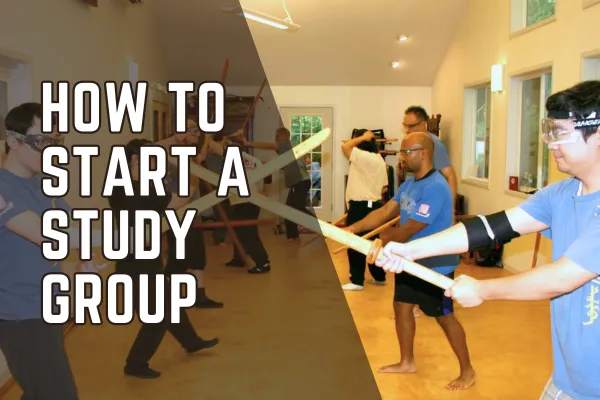
How to Start a Chinese Swordsmanship Study Group
“No real teachers near me.” – a common frustration that can become the seed for a thriving sword group.
Introduction
The art of Chinese swordsmanship has a powerful allure. Many martial artists are inspired by the tales of great swordsmen and dream of testing themselves in authentic Jian, Dao, or Miaodao practice. But what if there isn’t a local school nearby?
The good news is you don’t have to wait. With the right resources, a clear plan, and a few like-minded training partners, you can start your own Chinese swordsmanship study group.
Here’s how to turn passion into practice.
Step 1: Learn Chinese Swordsmanship Online
The biggest challenge is often the lack of a local instructor. Fortunately, online resources make it easier than ever to begin.
The Academy of Chinese Swordsmanship offers structured video lessons, curriculums, and forums covering everything from basic cuts to advanced forms. These materials provide a proven roadmap that keeps your group on track and avoids the overwhelm of scattered YouTube tutorials.
Online lessons also offer flexibility, cost-effectiveness, and the ability to revisit fundamentals at your own pace.
Step 2: Find and Engage Training Partners
Start by looking within your local martial arts community. Attend events, talk to students and instructors, and use social media or simple surveys to gauge interest.
Don’t limit yourself to only Chinese martial arts schools. Local gyms, fitness clubs, and especially HEMA (Historical European Martial Arts) clubs can be fantastic resources. HEMA groups are often numerous and usually love to cross blades with practitioners of different traditions. Training with them not only builds your network but also opens doors to sparring opportunities and cross-style learning.
By broadening your outreach, you’ll be surprised how quickly you can gather a circle of enthusiastic training partners.
Step 3: Create a Training Plan and Structure
A consistent structure helps your group thrive. For example:
15 minutes – Warm-up and mobility
30 minutes – Skill drills and basics
20 minutes – Partner drills or controlled sparring
15 minutes – Discussion of techniques or historical context
Define the goals of your study group early. Do you want to focus on historical accuracy? Practical swordplay? Tournament preparation? Having clarity ensures everyone knows what they’re training for.
Step 4: Adapt to Your Environment
You don’t need a fancy training hall. Many successful groups train in parks, backyards, or community centers. The key is consistency, not formality.
Outdoors offers space, fresh air, and often curious onlookers who may become your next members.
Step 5: Prioritize Safety
Swordsmanship is exhilarating — but safety must always come first.
Use protective gear such as fencing masks or goggles, padded gloves, and forearm guards.
Train with appropriate synthetic or blunt steel swords, never sharps.
Keep safe distances, especially when sparring.
Creating a safety-first culture builds trust, reduces injuries, and keeps everyone training longer.
Step 6: Grow Your Group with Outreach
Spread the word with:
Social media posts and videos demonstrating sword drills.
Flyers on local bulletin boards or martial arts forums.
Free introductory sessions so newcomers can try Chinese swordsmanship.
Authenticity resonates. Share why the art inspires you and how it differs from other sword traditions.
Step 7: Build a Community, Not Just a Class
A successful study group is about people, not just techniques. Organize social gatherings, movie nights, or dinners. Encourage group discussions about sword history and philosophy.
Connect with wider networks like the Academy of Chinese Swordsmanship and even local HEMA clubs. Participating in seminars and tournaments can give your group a sense of belonging to something larger than itself.
Conclusion: Take the Leap
Starting a Chinese swordsmanship study group may feel daunting, but with online resources, clear structure, and passionate partners, it’s within reach.
You’re not just building a class — you’re building a community. And the journey is as much about growth and connection as it is about the sword.
Take the leap. You may find a dedicated circle of practitioners standing beside you, ready to train.
⚔️ Continue Your Study
The Academy of Chinese Swordsmanship provides complete online programs in Jianfa, Daofa, and Miaodao, along with community forums and support for study groups worldwide.
